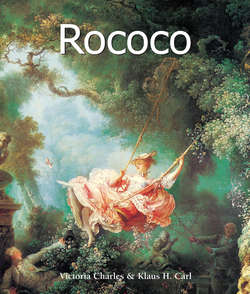Читать книгу Rococo - Victoria Charles - Страница 3
На сайте Литреса книга снята с продажи.
Contemporary History
Wars
ОглавлениеOther significant events during these absolutist years occurred in the first half of the restless 18th century, such as the victory over the Osmans (in 1717) of Prince Eugene of Savoy in the service of Austria. This victory inspired Carl Loewe (1796–1869) to compose the famous song “Prince Eugene, Noble Knight”. During the same year, the Hapsburg Maria Theresa (1717–1780) was born, later named the Archduchess and Queen of Hungary, in whose extensive collection of titles can also be found that of a Roman Empress. In Russia, Tsar Peter the Great (1672–1725) was still on the throne, and in the Italian state of Florence the Medicis continued to reign with Cosimo III (1642–1723). Between 1718 and 1729, and again from 1739 to 1748, England was fighting its wars against Spain, and the Russia-Austria alliance was again fighting the Turks in the 1730s. From 1740 to 1748, the War of the Austrian Succession raged with the First and Second Silesian Wars, in which European powers such as Bavaria, France, Prussia, the Netherlands and, of course, Austria partook.
Canaletto (Antonio Canal), A View of Walton Bridge, 1754.
Oil on canvas, 48.8 × 76.7 cm.
Dulwich Picture Gallery, London.
Nor was the second half of this century significantly more peaceful. It began in 1756 with all the major powers in Europe fighting the Seven Years War of Frederick II the Great of Prussia (1712–1786) who, with the two Schleswig Wars, had already brought his country to the edge of ruin against Austria’s Empress Maria Theresa. Those then involved were in fact intensively preoccupied on three other continents with their colonial wars, but in 1754 faced a war against each other; it was not until 1756 that they concluded a non-aggression pact.
The last quarter of the 18th century finally came to an end with a few fairly short wars: the war of the Bavarian Succession in the years 1778–1779, the war between Russia and Sweden (1788–1790) and that between Russia and Poland in 1792 (the fifth conflict between these two nations), which did not directly concern Europe. Meanwhile on Russia’s throne was Tsarina Catherine II, also called Catherine the Great (1729–1796), who established her country as a major power. The English and the French were still busy fighting each other, and the Native Americans had to come to terms with the Declaration of Independence and the founding of the United States of America. The century ended, after the French Revolution of 1789, with the Bombardment of Valmy (1792) and the Revolutionary Wars, which crossed with Napoleon I into the 19th century.
Andreas Schlüter, Equestrian Statue of Prince Elector Frederick William the Great, 1689–1703.
Bronze on stone base, height: 290 cm.
Schloss Charlottenburg, Berlin.
